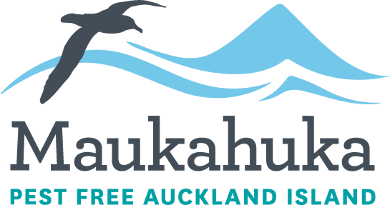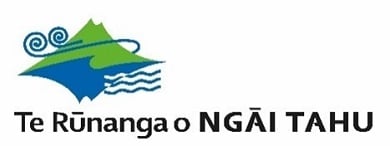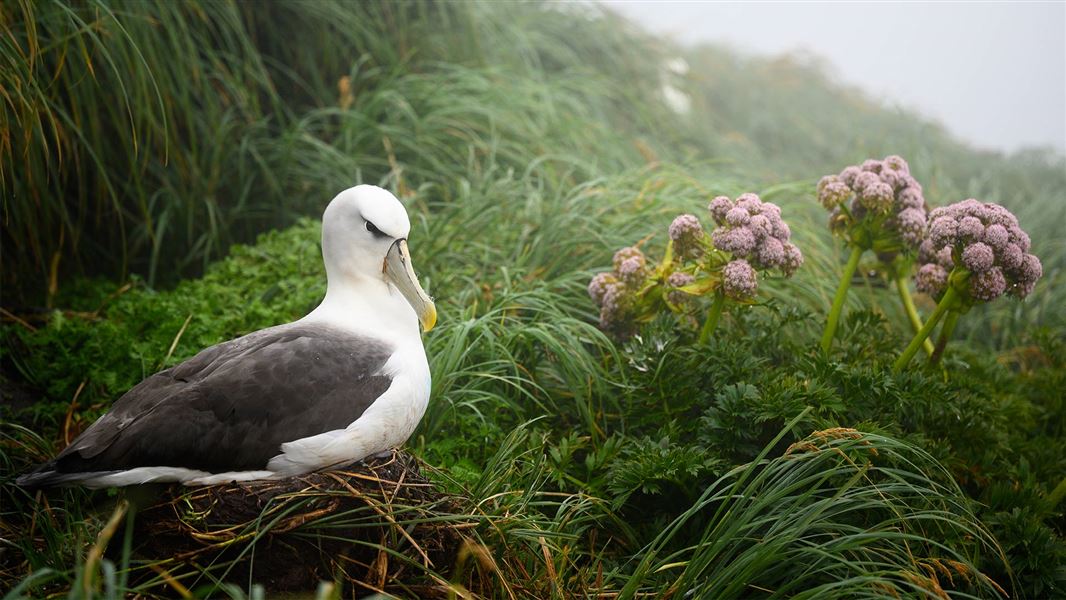We need your help
DOC and Ngāi Tahu, New Zealand Nature Fund (NZNF) and Island Ocean Connection Challenge (IOCC) are working together to restore and rewild Maukahuka/Auckland Island.
NZNF is a charitable trust responsible for funds donated to this project.
Image gallery
Video
Auckland Island is a nature reserve and World Heritage Site that is home to 500+ native plants and animals, including over 100 found nowhere else in the world.
This includes birds like Gibson’s albatross and the Auckland Island rail on land, and New Zealand sea lions and hoiho (yellow-eyed penguin) in its seas.
However, introduced pests - feral pigs, feral cats, and mice - have inflicted severe harm. 32 bird species are no longer found on the Island while plants and forests have been devastated and stunted.
The Maukahuka project aims to eradicate these three types of pests from the island. This means the Island’s animals and plants can thrive once again.
How removing pests will transform Auckland Island

The Maukahuka project will enable the return of megaherb meadows, albatross nesting en masse and blooming rātā forests. The largest colony of NZ sea lions in the world will also thrive.
Removing feral pigs, feral cats and mice will stop local extinctions and native habitat loss. They will no longer be able to prey on nesting birds, remove vital food sources or devastate and restrict plant growth.
Enabling seabird populations to recover also means they can once again fertilise soils and cycle nutrients to support the Island’s ecosystem.
This will drive an abundance of food resources and nourish island plants. These healthy changes will also flow into the waters to enhance the ocean's climate change resilience.
The project will:
- give native species over twice as much space to thrive in the subantarctic – up to 76,500 ha,
- create protected breeding sites for 38 species of native bird, including nine unique to the island,
- rapidly recover 280+ species of native insects, 95+ of which are found only on the Island,
- recover almost 200 species of native plants,
- safeguard surrounding predator free islands by ensuring pests cannot swim from it to others, and
- improve the island and the surrounding Southern Ocean’s resilience to the effects of climate change.
Support the project
Donate and join the movement to restore Auckland Island.
In July 2024, the Minister of Conservation announced International Visitor Levy funding to boost conservation which includes $3.65 million over two years to complete foundational work to ready the project for initiation. This includes raising the funds required to undertake the project.
We welcome all donations and are seeking new partners to support the project. Donate now or get in contact with us at maukahuka@doc.govt.nz
Auckland Island’s remoteness means there will be no ongoing cost to maintain it once it has been restored. This means your contribution can help to secure a wildlife stronghold for generations to come.
Preventing extinctions and saving entire ecosystems.
Our plan to restore Auckland Island
We have taken care to design an efficient, eight-year programme of work to remove pests for a thriving subantarctic. The work plan and our team of experts are ready to lead it as soon as funding is in place.
The team have developed a plan and timeline for each major project component based on extensive field-trials and research.
Major component is detailed below. Each will be supported by ongoing project management, native species monitoring, transport and logistics.
Maukahuka project overview brochure (PDF, 12,008)
Step 1: Create tracks, huts and bring supplies
The project will need to bring and supply everything it requires – from buildings, helicopters and tracks through to food, fuel, and tools – and remove it at the end.
The island is remote. It’s two days sail from the southern tip of New Zealand through often stormy seas. There are no permanent research stations and no regular supply ships.
Our Infrastructure team will be the first on island to build field huts, cut tracks, and ensure all the other supporting infrastructure is in place for a successful and efficient eradication.
Step 2: Eradicate feral pigs
Our expert team will prioritise feral pigs as the first pest to remove. This is because their presence would interfere with attempts to eradicate mice.
The team will use temporary fences to divide the island into three blocks. They will then use the following techniques in each block to remove all pigs:
- Thermal cameras and helicopters to aerially hunt feral pigs.
- Traps baited with corn.
- Hunting on the ground by hunters with dogs in each block in teams to detect any remaining feral pigs and complete two comprehensive sweeps of the island.
Step 3: Eradicate mice
The only proven way to eradicate all mice in an area as large as this is to apply a pest toxin by helicopter.
It will take 6 helicopters between 3 and 5 months to evenly sow bait pellets across the entire island twice.
This requires long daylight hours and fine weather for helicopter flight. So it must be done during the summer.
Step 4: Eradicate feral cats
To remove feral cats, the team will use a sausage bait specially developed to appeal to them. The team will spread baits across the island to target as many feral cats as possible.
This will be followed by targeted trapping and ground hunting with dogs trained to find them.
The team will also use a network of trail cameras. These will monitor feral cat numbers before and after bait has been placed. They will also help hunters to target their efforts and locate any remaining cats.
Step 5: Remove huts and supplies
Following years of hard work to remove all these pests, the team will be ready to leave the island to recover and flourish.
Infrastructure will be removed and returned to mainland New Zealand. Only a few buildings will remain. This is to support future research and science.
The team are committed to maintaining the integrity of Auckland Island as a Nature Reserve following the project's end. This is New Zealand’s highest form of nature protection.
How we know the plan will work
We found we could remove all mice from Antipodes Island in 2018. So DOC and Ngāi Tahu invested $3million to find out if it was possible to remove Auckland Island’s pests.
This research showed we could remove all three of these pests without them returning. Read the project reports and research below:
- Feasibility report summary (PDF, 4,933K)
- Full feasibility report (PDF, 17,618K)
- Assessing the feasibility of eradicating mammalian pests from Auckland Island (PDF, 24,517K)
One step closer to Predator Free 2050
Auckland Island is the fifth largest island in New Zealand. It is about the same size as all the past islands where pests have been eradicated put together. This makes it is our biggest pest-free island challenge yet – but it is achievable and will brings us closer to Predator Free 2050.
DOC are world leaders in removing pests from islands. We achieved a world-first rat free island in 1960 and now have helped to create over 110 sustained predator-free islands.
We are working towards the goal of eradicating all mammalian predators from New Zealand’s uninhabited offshore islands as a part of the collective Predator Free 2050 goal.
The lessons we learn, and the skills and tools we build from island eradications like Maukahuka will directly contribute to progressing Predator Free 2050 ambitions on the mainland.
Project partnership

The project is a partnership between DOC and Ngāi Tahu, tangata whenua (indigenous people of the land).
Together, we are committed to restoring the mauri (life force) of Auckland Island and the great Southern Ocean.
